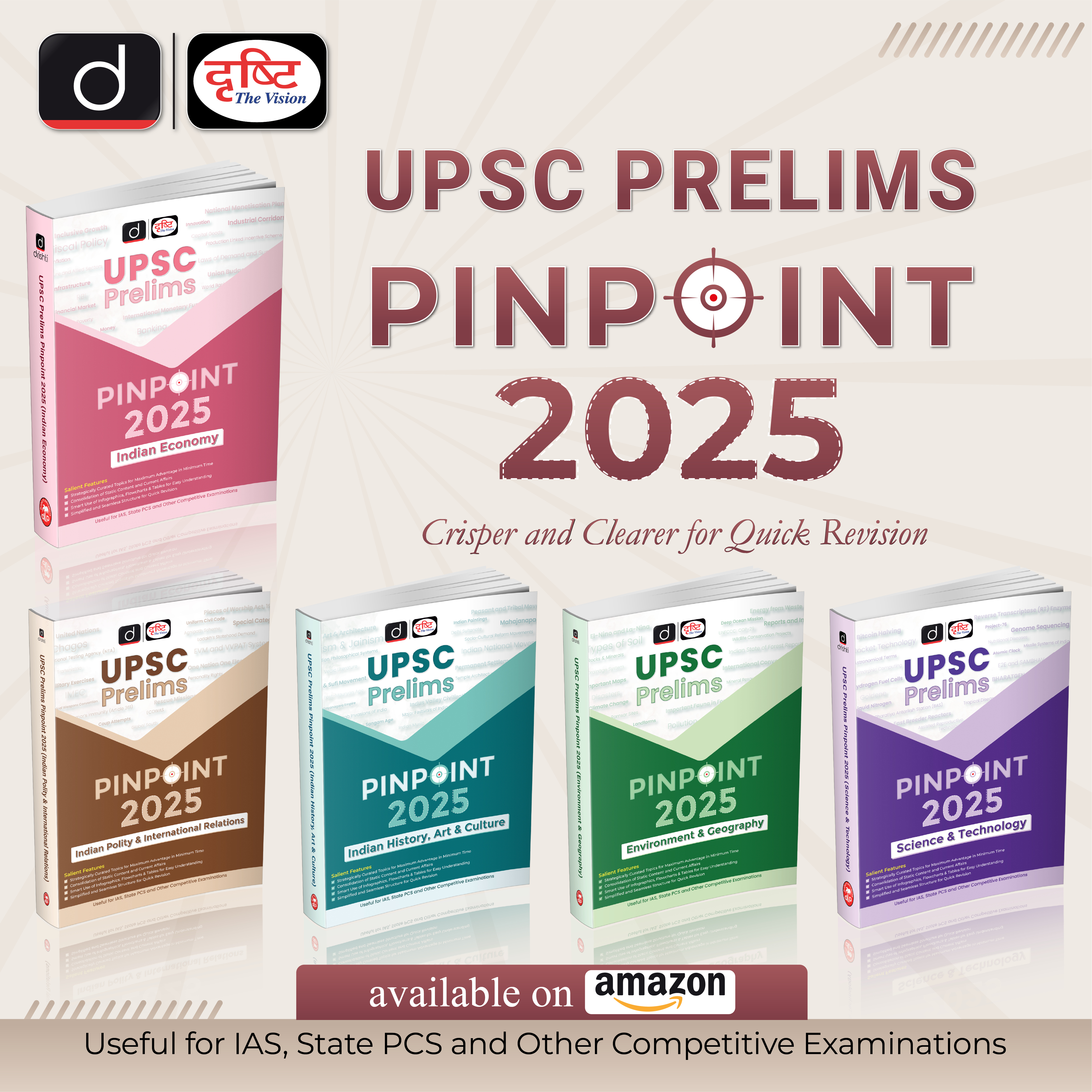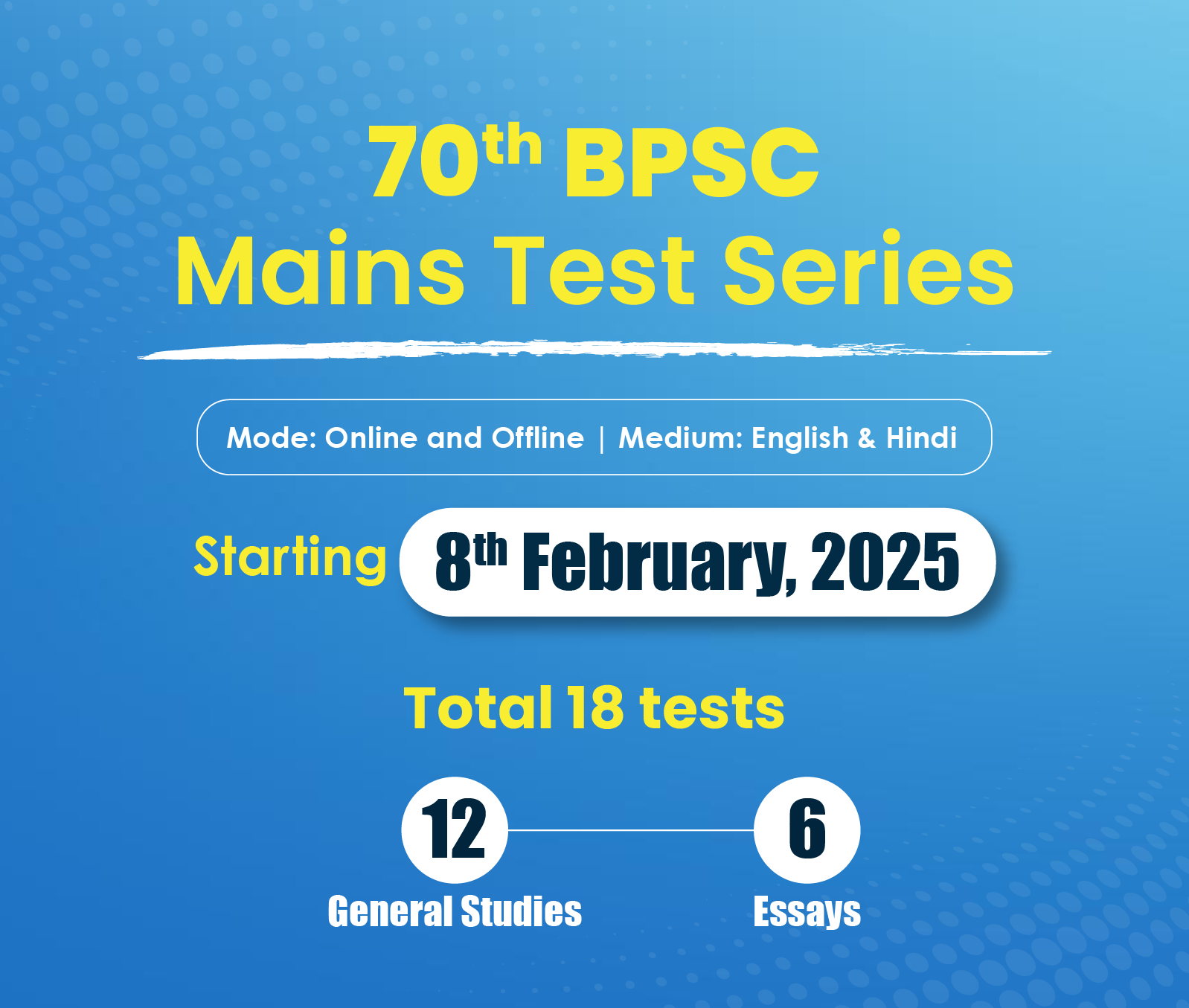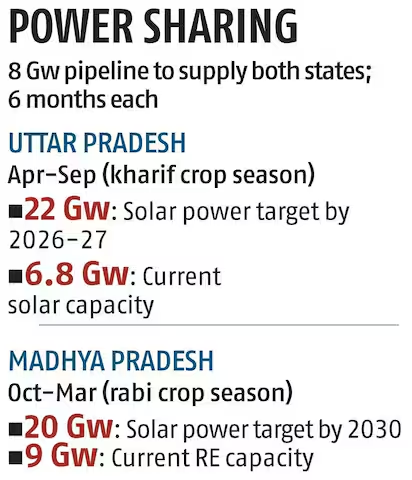Jammu & Kashmir Switch to Hindi
Electronic Voting Machines (EVM)
Why in News?
Recently, elections are being conducted in Jammu and Kashmir, with Electronic Voting Machines (EVMs) playing a crucial role in the polling process.
Key Points
- About: EVM is a device used to record votes electronically. They were first used in the Paravur Assembly Constituency of Kerala in the year 1982.
- Since 1998, the Election Commission has increasingly used EVMs instead of ballot boxes.
- In 2003, all state elections and by-elections were held using EVMs.
- Encouraged by this, in 2004, the Commission took a historic decision to use only EVMs for the Lok Sabha elections.
- Development: It has been devised and designed by the Technical Experts Committee (TEC) of the Election Commission in collaboration with two Public Sector undertakings: Bharat Electronics Ltd, Bangalore (under Ministry of Defence ) and Electronic Corporation of India Ltd, Hyderabad (under Department of Atomic Energy).
- Functionality: It has two parts, a Control Unit and a Balloting Unit connected by a cable.
- The Control Unit stays with the polling officer, while the Balloting Unit is in the voting booth.
- The voter has to simply press the blue button on the Ballot Unit against the candidate and symbol of his choice and the vote is recorded.
- Key Features:
- An EVM being used by ECI can record a maximum of 2,000 votes.
- They do not require electricity. They run on an ordinary battery assembled by Bharat Electronics Limited/Electronics Corporation of India Limited.
- The microchip used in EVMs is a one-time programmable/masked chip, which can neither be read nor overwritten.
- Furthermore, the EVMs are stand-alone machines and there is no operating system used in these machines.
- Benefits:
- Accuracy: EVMs eliminate the occurrence of 'Invalid Votes' seen frequently with paper ballots, ensuring a more accurate reflection of voter choice and reducing complaints and legal disputes.
- Efficiency: EVMs streamline the voting process, making it faster and more efficient. They eliminate the need for manual counting, reducing the time required to declare election results.
- Transparency: EVMs enhance transparency in the electoral process by providing a clear and verifiable record of votes cast. With features like VVPAT, voters can verify that their votes are recorded accurately.
- Cost-effectiveness: EVMs offer cost savings in terms of paper, printing, transportation, and storage, as they eliminate the need for millions of printed ballot papers for each election cycle.
VVPAT
- About: Voter Verifiable Paper Audit Trail (VVPAT) is an independent system attached with the EVM that allow the voters to verify that their votes are cast as intended.
- It was introduced in the bye-election of the Noksen Assembly Constituency of Nagaland in 2013.
- In the 2019 Lok Sabha elections, VVPATs were used in all the constituencies.
- Functionality: When a vote is cast, a slip is printed containing the serial number, name and symbol of the candidate and remains exposed through a transparent window for 7 seconds.
- Thereafter, the printed slip automatically gets cut and falls in the sealed drop box of the VVPAT.
- The machines can be accessed by polling officers only.
- Related Supreme Court Ruling: In a 2013 Subramanian Swamy V/S ECI case, the Supreme Court emphasised the necessity of implementing VVPAT in elections conducted through EVMs.
- Presently, the M3 Model of ECI-EVM and VVPAT are used.
Haryana Switch to Hindi
Election Commission of India
Why in News?
Recently, the Election Commission of India has intensified its efforts in Haryana to ensure free and fair elections, focusing on real-time monitoring of campaign finances, voter outreach initiatives, and strict adherence to the Model Code of Conduct.
Key Points
- The Election Commission of India (ECI) is an autonomous constitutional authority responsible for administering Union and State election processes in India.
- It was established in accordance with the Constitution on 25th January 1950 (celebrated as National Voters' Day). The secretariat of the commission is in New Delhi.
- The body administers elections to the Lok Sabha, Rajya Sabha, and State Legislative Assemblies in India, and the offices of the President and Vice President in the country.
- It is not concerned with the elections to panchayats and municipalities in the states. For this, the Constitution of India provides for a separate State Election Commission.
- Constitutional Provisions:
- Part XV (Article 324-329): It deals with elections and establishes a commission for these matters.
- Article 324: Superintendence, direction and control of elections to be vested in an Election Commission.
- Article 325: No person to be ineligible for inclusion in, or to claim to be included in a special, electoral roll-on grounds of religion, race, caste or sex.
- Article 326: Elections to the House of the People and to the Legislative Assemblies of States to be based on adult suffrage.
- Article 327: Power of Parliament to make provision with respect to elections to Legislatures.
- Article 328: Power of Legislature of a State to make provision with respect to elections to such Legislature.
- Article 329: Bar to interference by courts in electoral matters.
- Structure of ECI:
- Originally the commission had only one election commissioner but after the Election Commissioner Amendment Act, 1989, it was made a multi-member body.
- The Election Commission shall consist of the Chief Election Commissioner (CEC) and such number of other election commissioners, if any, as the President may from time-to-time fix.
- Presently, it consists of the CEC and two Election Commissioners (ECs).
- At the state level, the election commission is helped by the Chief Electoral Officer.
- Appointment & Tenure of Commissioners:
- The President appoints CEC and Election Commissioners as per the CEC and Other ECs (Appointment, Conditions of Service and Term of Office) Act, 2023.
- They have a fixed tenure of six years, or up to the age of 65 years, whichever is earlier.
- The salary and conditions of service of the CEC and ECs will be equivalent to that of the Supreme Court Judge.
- Removal:
- They can resign anytime or can also be removed before the expiry of their term.
- The CEC can be removed from office only through a process of removal similar to that of a SC judge by Parliament, while ECs can only be removed on the recommendation of the CEC.
- Limitations:
- The Constitution has not prescribed the qualifications (legal, educational, administrative or judicial) of the members of the Election Commission.
- The Constitution has not specified the term of the members of the Election Commission.
- The Constitution has not debarred the retiring election commissioners from any further appointment by the government.
Jharkhand Switch to Hindi
1.78 lakh PVTGs Enrolled
Why in News?
Recently, the Election Commission of India has taken significant steps to ensure inclusive, participative elections in Jharkhand, focusing on the enrollment of Particularly Vulnerable Tribal Groups (PVTGs).
Key Points
- 100% Enrollment of PVTGs: 1.78 lakh voters from eight PVTGs have been fully enrolled in the electoral roll.
- Electoral Roll Statistics: A total of 2.59 crore electors are registered, including 1.28 crore women voters and over 11.05 lakh first-time voters (18-19 years).
- Special Summary Revision (SSR): The second SSR for the State was completed and the electoral roll was published on 27th August, 2024.
- Election Commission's Directive: Emphasis on zero tolerance for the use of money power, as conveyed during meetings with enforcement agencies, political parties, and security forces.
Particularly Vulnerable Tribal Groups (PVTGs)
- In India, tribal population makes up for 8.6% of the total population.
- PVTGs are more vulnerable among the tribal groups. Due to this factor, more developed and assertive tribal groups take a major chunk of the tribal development funds because of which PVTGs need more funds directed for their development.
- In 1973, the Dhebar Commission created Primitive Tribal Groups (PTGs) as a separate category, who are less developed among the tribal groups. In 2006, the Government of India renamed the PTGs as PVTGs.
- In this context, in 1975, the Government of India initiated to identify the most vulnerable tribal groups as a separate category called PVTGs and declared 52 such groups, while in 1993 an additional 23 groups were added to the category, making it a total of 75 PVTGs out of 705 Scheduled Tribes.
- PVTGs have some basic characteristics i.e., they are mostly homogenous, with a small population, relatively physically isolated, absence of written language, relatively simple technology and a slower rate of change etc.
- Among the 75 listed PVTG’s the highest number are found in Odisha.
Chhattisgarh Switch to Hindi
Lightning Killed Many
Why in News?
Recently, a devastating lightning strike in Chhattisgarh's Rajnandgaon claimed the lives of several people, including children, during heavy rainfall.
Key Points
- Lightening in India:
- Lightning is a powerful and visible electrical phenomenon that takes place when there is a buildup of electrical charges within clouds and between clouds and the ground.
- The discharge of this electrical energy results in a brilliant flash of light and a rapid expansion of air, creating the characteristic thunder that accompanies lightning.
- Cloud-to-ground (CG) lightning is dangerous because it can electrocute people due to its high electric voltage and current.
- India ranks among the five countries worldwide with an early warning system for lightning.
- The system provides forecasts ranging from five days to as close as three hours before the occurrence of lightning.
- Lightning is a powerful and visible electrical phenomenon that takes place when there is a buildup of electrical charges within clouds and between clouds and the ground.
- Lightning Fatalities: Statistics and Trends
- National Crime Records Bureau (NCRB) Data: In 2021, lightning accounted for 2,880 deaths, comprising 40% of all accidental deaths caused by "forces of nature."
- The trend indicates an increase in lightning-related fatalities compared to other natural events.
- National Crime Records Bureau (NCRB) Data: In 2021, lightning accounted for 2,880 deaths, comprising 40% of all accidental deaths caused by "forces of nature."
- Geographical Distribution in India:
- Lightning frequency is highest in northeastern states and West Bengal, Sikkim, Jharkhand, Odisha, and Bihar.
- However, the number of lightning-related deaths is higher in central Indian states like Madhya Pradesh, Maharashtra, Chhattisgarh, and Odisha.
- Bihar is one of the most vulnerable states to lightning strikes, with a significant number of deaths reported annually.
- In 2023, till July 6, Bihar recorded 107 deaths due to lightning.
- Lightning frequency is highest in northeastern states and West Bengal, Sikkim, Jharkhand, Odisha, and Bihar.
- Union Government's View About Lightning:
- The Union government opposes declaring lightning a natural disaster. The government believes that education and awareness can help prevent lightning-related deaths effectively.
Possible Factors Behind the Increasing Trend of Lightning Strikes
- Climate Change: Global warming and climate change could potentially influence atmospheric conditions, leading to an increase in thunderstorms and lightning activity.
- As the planet's temperature rises, there may be changes in the distribution of moisture, instability, and convective processes that could favor more frequent lightning occurrences.
- Kalbaisakhi is a localised thunderstorm occurrence that is accompanied by lightning, typically observed during the pre-monsoon season in the Indian subcontinent.
- Urbanization: The expansion of urban areas can create what is known as the "urban heat island effect."
- Cities tend to be warmer than surrounding rural areas due to increased human activity, energy consumption, and impervious surfaces.
- These localized heat islands may lead to the formation of more thunderstorms and, consequently, an increase in lightning strikes.
- Land Use Changes: Deforestation, changes in agricultural practices, and alterations of natural landscapes may disrupt local atmospheric conditions.
- Such changes might contribute to the development of thunderstorms and, consequently, more lightning.
- Pollution and Aerosols: Air pollution, including aerosols and particulate matter, can affect cloud formation and electrical activity within storms.
- Anthropogenic emissions might influence the frequency and intensity of thunderstorms, potentially leading to more lightning strikes.
Rajasthan Switch to Hindi
Monsoon Withdraws from Parts of Rajasthan
Why in News?
Recently, the Southwest monsoon has started withdrawing from parts of Rajasthan, marking a delayed retreat this year.
Key Points
- Delayed Monsoon Withdrawal: The Southwest monsoon began withdrawing from West Rajasthan and Kachchh, a week later than scheduled, with further withdrawal expected from Punjab, Haryana, and Gujarat in the next 24 hours (as per Indian Meteorological Department (IMD).
- Overall, monsoon rainfall has been 5% higher than normal, despite a 3% deficit in September.
- August received 15% more rainfall than normal, compared to the 6% projected by the IMD, due to multiple depressions from the Arabian Sea and Bay of Bengal.
- La Niña's Impact: Contrary to IMD’s forecast of a 9% increase in September rainfall due to La Niña, the month saw a 3% shortfall.
- Full Withdrawal Timeline: The complete withdrawal of the Southwest monsoon is expected by mid-October, making way for the northeastern monsoon in southern states like Tamil Nadu, Kerala, and Andhra Pradesh.
Monsoon in India
The Indian monsoon is a seasonal wind system that plays a critical role in determining the climate and agricultural patterns of the country. It is marked by a distinct wet and dry period, with the Southwest Monsoon bringing significant rainfall between June and September.
Key Characteristics of the Indian Monsoon:
- Seasonal Wind Reversal:
- Monsoon winds are characterized by a reversal of wind direction. During summer (June to September), moist winds blow from the Indian Ocean towards the land (Southwest Monsoon), while in winter (October to December), dry winds blow from land towards the sea (Northeast Monsoon).
- Southwest Monsoon:
- Dominates during the summer months (June to September) and is divided into two branches: the Arabian Sea Branch and the Bay of Bengal Branch.
- These winds bring heavy rainfall, particularly to the western coast, northeastern regions, and the Indo-Gangetic plains.
- The Southwest Monsoon supports India’s agriculture, accounting for most of the Kharif crop season’s irrigation.
- Northeast Monsoon:
- Occurs during the winter months (October to December) and primarily affects southern India, especially Tamil Nadu, Andhra Pradesh, and Kerala.
- It brings lesser rainfall compared to the Southwest Monsoon and contributes to the rabi crops.
- Retreating Monsoon:
- As the monsoon withdraws, the dry winds from the north bring cooler temperatures, marking the transition to winter, particularly in northern India.
Uttar Pradesh Switch to Hindi
UP and MP Collaborate on 8 GW Solar Power Projects
Why in News?
Recently, Madhya Pradesh (MP) and Uttar Pradesh (UP) governments have partnered to develop 8 gigawatts (GW) of solar power plants, marking a significant first-of-its-kind renewable energy collaboration between two Indian states.
Key Points
- Collaboration Overview:
- The power generated will be shared between the two states, alternating every six months, aligning with their respective peak demand seasons.
- Madhya Pradesh: Peak demand occurs from October to March, coinciding with the rabi crop season.
- Uttar Pradesh: Peak demand occurs between April and September, aligning with the kharif crop season.
- Solar power will be distributed based on these seasonal demand patterns.
- Project Phases and Development:
- In the first phase, a 2 GW project will be developed, with Morena (MP) identified as a possible site.
- State Renewable Energy Goals:
- Madhya Pradesh: Aims to achieve 20 GW of renewable energy capacity by 2030, up from its current 9 GW.
- Uttar Pradesh: Targets 22 GW of solar capacity by 2026-27, up from its current 6.8 GW.








%20MPPCS%202025%20Desktop%20E.jpg)
%20MPPCS%202025%20Mobile%20E%20(1).jpg)










.png)
.png)











 PCS Parikshan
PCS Parikshan


